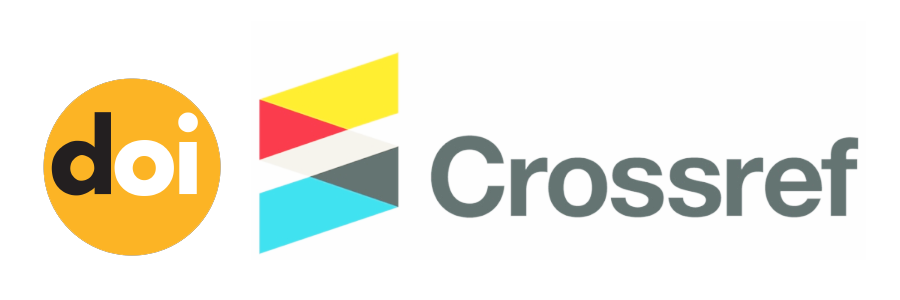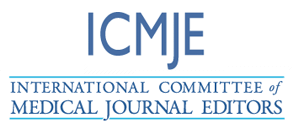Unraveling the Complexities of T wave Alternans and QT Prolongation in Advanced Chronic Kidney Disease: A Case Report and Literature Review
DOI:
https://doi.org/10.55677/IJCSMR/V4I6-05/2024Keywords:
T-wave alternans, QT prolongation, chronic kidney disease, ventricular arrhythmias, sudden cardiac death, electrolyte imbalance, hemodialysis.Abstract
The recognition of QT interval prolongation and T-wave alternans (TWA) on an electrocardiogram (ECG) is a critical prognostic criterion. We report a 78-year-old patient with advanced chronic kidney disease (CKD) to demonstrate the intricate interaction of variables leading to electrical instability in this demographic, in addition to stressing the relevance of comprehensive diagnostic and therapeutic techniques. We underline the significance of TWA and QT prolongation as indicators for imminent ventricular arrhythmias and sudden cardiac death (SCD). The case underscores the multifactorial causes of QT prolongation and TWA in CKD. It highlights the need for further research to understand the underlying mechanisms better and develop strategies to mitigate risks in CKD patients.
References
Hering HE. Das Wesen des Herzalternans. Muenchener Med Wochenschr 1908; 4:1417-1421
Lewis T. NOTES UPON ALTERNATION OF THE HEART. QJM: An International Journal of Medicine [Internet]. 1911 Jan 1 [cited 2024 Mar 31]; Available from: https://academic.oup.com/qjmed/article-abstract/os4/2/141/1571198?redirectedFrom=PDF
Cutler MJ, Rosenbaum DS. Explaining the clinical manifestations of T wave alternans in patients at risk for sudden cardiac death. Heart Rhythm [Internet]. 2009 Mar 1 [cited 2024 Mar 31];6(3):S22–8. Available from:
https://www.ncbi.nlm.nih.gov/pmc/articles/PMC2680220/#R26
Narayan SM. T-Wave Alternans and the Susceptibility to Ventricular Arrhythmias. Journal of the American College of Cardiology [Internet]. 2006 Jan 1 [cited 2024 Apr 1];47(2):269–81. Available from: https://www.sciencedirect.com/science/article/pii/S0735109705025040#bib14
Monitillo F, Leone M, Rizzo C, Passantino A, Iacoviello M. Ventricular repolarization measures for arrhythmic risk stratification. World Journal of Cardiology [Internet]. 2016 Jan 1 [cited 2024 Apr 1];8(1):57–7. Available from:
https://www.ncbi.nlm.nih.gov/pmc/articles/PMC4728107/
Aro AL, Kenttä TV, Huikuri HV. Microvolt T-wave Alternans: Where Are We Now? Arrhythmia & electrophysiology review [Internet]. 2016 Jan 1 [cited 2024 Apr 12];5(1):37–7. Available from: https://www.ncbi.nlm.nih.gov/pmc/articles/PMC4939287/
Liu P, Wang L, Han D, Sun C, Xue X, Li G. Acquired long QT syndrome in chronic kidney disease patients. Renal failure [Internet]. 2019 Dec 27 [cited 2024 Apr 12];42(1):54–65. Available from: https://www.ncbi.nlm.nih.gov/pmc/articles/PMC6968512/#CIT0001
Sherif KA, Elsayed Abo-Salem, Ragesh Panikkath, Musab Nusrat, Meryem Tuncel. Cardiac Repolarization Abnormalities Among Patients With Various Stages of Chronic Kidney Disease. Clinical cardiology [Internet]. 2014 Jul 1 [cited 2024 Apr 12];37(7):417–21. Available from: https://www.ncbi.nlm.nih.gov/pmc/articles/PMC6649453/
Jha V, Garcia-Garcia G, Kunitoshi Iseki, Li Z, Naicker S, Plattner B, et al. Chronic kidney disease: global dimension and perspectives. Lancet [Internet]. 2013 Jul 1 [cited 2024 Apr 13];382(9888):260–72. Available from:
https://pubmed.ncbi.nlm.nih.gov/23727169/
Tarquini R, Lazzeri C, Pala L, Carlo Maria Rotella, Gian Franco Gensini. The diabetic cardiomyopathy. Acta diabetologica [Internet]. 2010 Mar 3 [cited 2024 Apr 13];48(3):173–81. Available from: https://pubmed.ncbi.nlm.nih.gov/20198391/
Piccirillo. QT-interval variability and autonomic control in hypertensive subjects with left ventricular hypertrophy. Clinical science (London, England : 1979) [Internet]. 2021 [cited 2024 Apr 13];102(3). Available from:
https://pubmed.ncbi.nlm.nih.gov/11869178/
Flore Duranton, Cohen G, Rita De Smet, Rodriguez M, Jankowski J, Vanholder R, et al. Normal and Pathologic Concentrations of Uremic Toxins. Journal of the American Society of Nephrology [Internet]. 2012 Jul 1 [cited 2024 Apr 13];23(7):1258–70. Available from:
https://www.ncbi.nlm.nih.gov/pmc/articles/PMC3380651/
Carlos Alexandre Falconi, Victoria C, Fogaça-Ruiz F, Stable C, da S, Marques E, et al. Uremic Toxins: An Alarming Danger Concerning the Cardiovascular System. Frontiers in physiology [Internet]. 2021 May 14 [cited 2024 Apr 14];12. Available from: https://www.frontiersin.org/journals/physiology/articles/10.3389/fphys.2021.686249/full
Zhang Y, Post WS, Dalal D, Bansal S, Blasco-Colmenares E, Jan S, et al. Serum 25-Hydroxyvitamin D, Calcium, Phosphorus, and Electrocardiographic QT Interval Duration: Findings from NHANES III and ARIC. The Journal of clinical endocrinology and metabolism/Journal of clinical endocrinology & metabolism [Internet]. 2011 Jun 1 [cited 2024 Apr 14];96(6):1873–82. Available from: https://www.ncbi.nlm.nih.gov/pmc/articles/PMC3100754/
Varga C, Zsolt Kálmán, Alíz Szakáll, Kata Drubits, Koch M, Róbert Bánhegyi, et al. ECG alterations suggestive of hyperkalemia in normokalemic versus hyperkalemic patients. BMC emergency medicine [Internet]. 2019 May 31 [cited 2024 Apr 14];19(1). Available from:
https://bmcemergmed.biomedcentral.com/articles/10.1186/s12873-019-0247-0
Yang Y, Chen C, Duan P, Suman Thapaliya, Gao L, Dong Y, et al. The ECG Characteristics of Patients With Isolated Hypomagnesemia. Frontiers in physiology [Internet]. 2021 Jan 27 [cited 2024 Apr 14];11. Available from:
https://www.ncbi.nlm.nih.gov/pmc/articles/PMC7873644/
Bennett MT, Gula LJ, Klein GJ, Skanes AC, Yee R, Leong-Sit P, et al. Effect of beta-blockers on QT dynamics in the long QT syndrome: measuring the benefit. Europace [Internet]. 2014 May 15 [cited 2024 Apr 14];16(12):1847–51. Available from: https://academic.oup.com/europace/article/16/12/1847/489481
Praveen Indraratna, Tardo D, Delves M, Szirt R, Ng B. Measurement and Management of QT Interval Prolongation for General Physicians. Journal of general internal medicine [Internet]. 2019 Oct 25 [cited 2024 Apr 12];35(3):865–73. Available from: https://www.ncbi.nlm.nih.gov/pmc/articles/PMC7080915/#:~:text=The%20corrected%20QT%20interval%20is,rise%20to%20abnormal%20myocardial%20repolarisation.
Al-Akchar M, Siddique MS. Long QT Syndrome [Internet]. Nih.gov. StatPearls Publishing; 2022 [cited 2024 Apr 15]. Available from: https://www.ncbi.nlm.nih.gov/books/NBK441860/
Adler A, Novelli V, Amin AS, Emanuela Abiusi, Care M, Nannenberg EA, et al. An International, Multicentered, Evidence-Based Reappraisal of Genes Reported to Cause Congenital Long QT Syndrome. Circulation [Internet]. 2020 Feb 11 [cited 2024 May 18];141(6):418–28. Available from:
https://www.ncbi.nlm.nih.gov/pmc/articles/PMC7017940/
Bohnen MS, Peng G, Robey SH, C. Terrenoire, Iyer V, Sampson KJ, et al. Molecular Pathophysiology of Congenital Long QT Syndrome. Physiological reviews [Internet]. 2017 Jan 1 [cited 2024 May 18];97(1):89–134. Available from:
https://www.ncbi.nlm.nih.gov/pmc/articles/PMC5539372/
Chandrasekharan Rajasekharan, Kavadisseril Vivekanandan Vysakha, Vijayakumar Karthik, Muralikrishnan Harikrishnan. T-wave alternans: a harbinger for malignant ventricular arrhythmias. BMJ case reports [Internet]. 2018 Jul 12 [cited 2024 Apr 15];bcr-225515. Available from:
https://casereports.bmj.com/content/2018/bcr-2018-225515
Soma, D., Johnson, B., & Rosenblum, A. (2020). MACROVOLT TWAVE ALTERNANS: A FOREBODING SIGN FOR VENTRICULAR ARRHYTHMIA IN SEVERE SYSTEMIC ILLNESS. Journal of the American College of Cardiology, 75(11), 2693.
https://doi.org/10.1016/s0735-1097(20)33320-9
Feng HW, Zhao YT, Lin J, Weng CL. T-wave alternans: an ominous pattern for malignant arrhythmias. QJM [Internet]. 2023 May 18 [cited 2024 Apr 15];116(9):781–3. Available from: https://academic.oup.com/qjmed/article/116/9/781/7172387
Downloads
Published
Issue
Section
License
Copyright (c) 2024 International Journal of Clinical Science and Medical Research

This work is licensed under a Creative Commons Attribution 4.0 International License.












